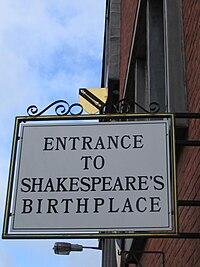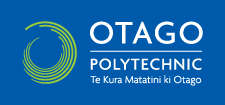Question 5
| Developing an online course for Shakespeare's Hamlet Theresa Brown, an English literature educator, is developing an online course on Hamlet by William Shakespeare. The course will be delivered using the learning management system (LMS) hosted by her education institution. Registered students are provided with password access for the LMS. A number of students do not have affordable access to the internet at home, so Theresa wants to include copies of resources in the LMS so they can be accessed through the institution's local network. She plans to include the following resources:
Requirements We suggest you write down your answers so you can check these against the self-assessment activities which follow. In each case, you should identify:
This case study was inspired by ideas in the Copyright 4 Educators (ZA) course. Note that for the purposes of this case study, Theresa is a fictitious character and has not published in the Australian Humanities Review.
|
Question 5: Theresa's slide show
Questions relating to the copyright of Theresa's slide show
- Choose the correct option. Afterwards, we suggest that you review the feedback on all the options as these also contain valuable information.
- Is Theresa's slide show protected by copyright
- Yes
- Correct. Theresa's slide show would constitute a scientific or creative work and is therefore protected by copyright.
- No
- Incorrect. Theresa's slide show would constitute a scientific or creative work and is therefore protected by copyright.
- Yes
- Which of the following options would be the most likely candidates for the ownership of the copyright of the content in Theresa's slide show.
- Theresa
- It depends. Generally speaking, the owner of the copyright is the original author. However, this may not be the case if the work was carried out in the course of her employment. Theresa will need to consult her national copyright legislation, her employment contract and/or intellectual property policies of her institution. If Theresa is employed as an educator, there is a strong likelihood that the copyright of the teaching materials she produces belong to her employer. However, her slide show contains materials which may be subject to third party copyright.
- Theresa's employer
- It depends on whether the slideshow is a derivative work of the article published in the Australian Humanities Review. Assuming it is a derivative work, Theresa would need to clear permissions with the publisher. However, if Theresa included only a few citations properly referenced, there is a strong likelihood that as an educator, the teaching materials Theresa develops belong to her employer (with the exclusion of any exemptions contained in her employment contract or intellectual property policies of her employer and copyright legally assigned to third parties).
- The Australian Humanities Review
- Most likely alternative at first glance based on the assumption that the slide show is a derivative work because the case study suggests that it was largely based on the publication. Theresa's research output published in the Australian Humanities Review is "all rights reserved" when viewing the copyright statement at the bottom of the journal's homepage. The journal's website clearly states that the HTML versions of the articles are all rights reserved copyright and owned by the Australian Humanities Review. However, the pdf version of the articles in the Australian Humanities Review uses a custom copyright license which permits copying and reuse for personal purposes or within Theresa's organisation with the requirement for attribution but may not be mounted on any other server for public access. The fact that the journal is an "open access" journal does not necessarily imply permissions for reuse have been granted. However, further investigation reveals, when accessing articles via the contributors page and then clicking on a contributor, for example, Don Anderson's paper there is still an all rights reserved copyright. You still need to dig further by scrolling down to the bottom of the page to find a link to further details of the copyright where we learn that the license is owned by the author and assigned to Journal under all rights reserved. Theresa will need to consult her employer's intellectual property policies to determine the copyright ownership of her research output prior to reusing this work for her course.
- Theresa
- Does it make a difference if the creative outputs are research or teaching materials?
- Yes
- Correct. In most instances, this can make a difference and further investigation of Theresa's employment contract and the institution's intellectual property policy will be required. Many tertiary education institutions subscribe to the notion of "academic exception” where the copyright of research output is assigned to the original author. Note that the copyright legislation of most countries assigns the copyright of creative works generated in the course of employment to the employer. Many teaching institutions will require that learning materials created in the course of employment belong to the employer.
- No
- Incorrect. In most cases around the world, educational institutions may distinguish between the ownership of copyright between research and teaching materials produced in the course of employment. This of course assumes that Theresa is employed as an educator where both teaching and research are normal outputs of her work.
- Yes
- Can Theresa include a copy of the slide show she created in the course of her employment in the online course.
- Yes
- Most probably. This would depend on the extent of verbatim copies in the slide show of her work published in the Australian Humanities Review article which is owned by the journal. Theresa's national copyright legislation may provide more generous exceptions than usually permissible under fair dealing or fair usage. With reference to original teaching content contained in the slide show, her conditions of employment would more than likely permit inclusion of these materials in her teaching. (Note: This assumes that the slide show does not contain any other third party materials.)
- No
- Incorrect. Assuming that Theresa is employed as a teacher, there shouldn't be any issues incorporating original teaching materials in her course. Theresa may need to clear copyright permissions from the journal for inclusion of verbatim copies of her article, but typically educators don't include full text in a slide show. Appropriately cited extracts from the article text owned by the Australian Humanities Review would fall under fair dealing or fair usage. (Note: This assumes that the slide show does not contain any other third party materials.)
- Yes

